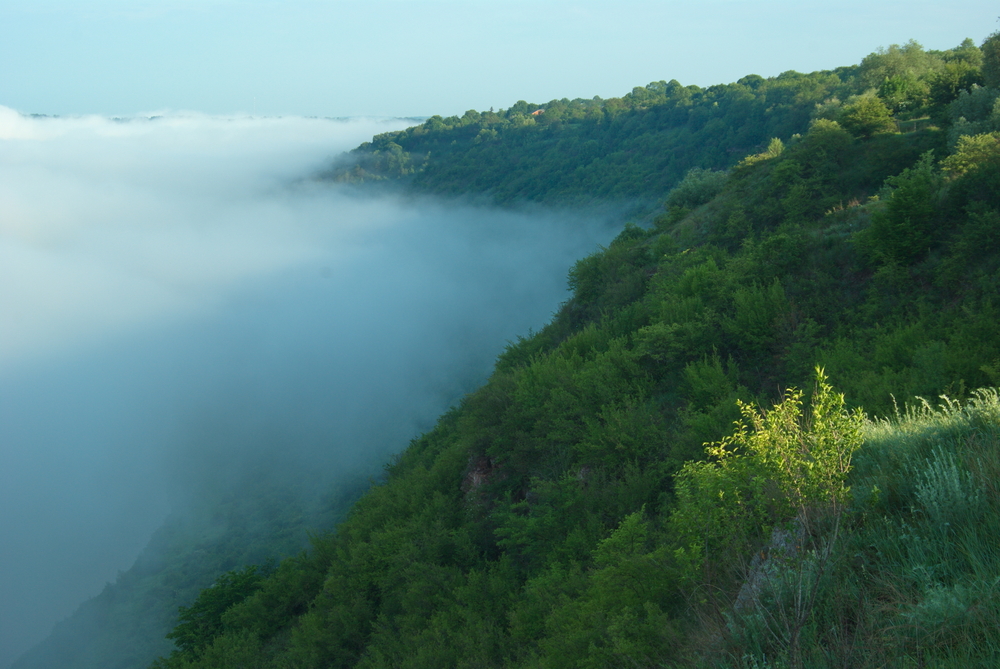The Dniester River is the second largest and the most ecologically clean river in Ukraine. Being 250-kilometer-long, it is also one of the longest rivers in Europe.
The Dniester Canyon itself is a picturesque area of the Dniester River Valley, which is located between the mouth of Zolota Lypa River and the mouth of Zbruch River. Framed with steep slopes hanging over it, the Dniester River makes peculiar twists in this place and creates multitude of fantastic curves. Its width in the valley is 100 – 200 meters. The long wall of cliffs, stretching along the left bank of the river, features unique natural formations: about 500-million-year-old fossilized remains of flora and fauna and ancient deposits of rocks. Some cliffs resemble cheese, due to large number of mysterious caves and grottos, piercing them. According to legend, pagan altars were placed there in ancient times, and later hermit monks lived in them.
Read: Interesting Travel Destinations in Ukraine

The nature of the Dniester Canyon is specific and original. Its unique natural location provides the canyon with special and unusually warm for this area climate. This area is jokingly referred to as Galician subtropics by the local scientists. Many species of animals, birds and fish, including rare ones, listed in the Red Book of Ukraine, chose this area as their habitat.
The Dniester canyon is an original open-air-museum, where travelers can explore amazing natural historical, cultural and architectural landmarks. Visitors are welcome to discover the canyon on a walking tour along its picturesque banks or on a trip down the Dniester River on a boat or catamaran. People who are fond of extreme recreation often organize white water rafting there.

Read: Buky Canyon in Ukraine
It is better to reach the canyon from Ternopil or Ivano-Frankivsk. You need to drive to any of the villages, located in close proximity to the Dniester River Valley (Mikhalche, Nyrkov, Beremyany, Khmelev and others) and look for a B&B or guest-house to stay.
Photo source: shutterstock.com












